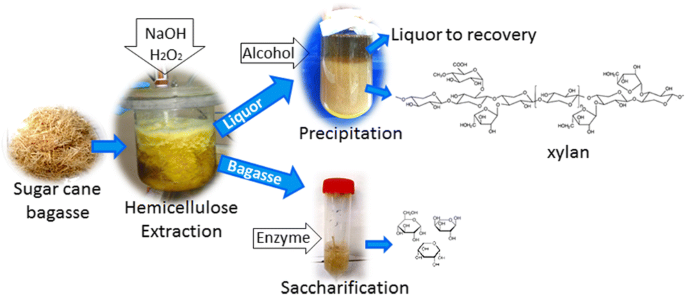Best Cane Sugar Processing Chemicals: Relied On by Sector Experts
Best Cane Sugar Processing Chemicals: Relied On by Sector Experts
Blog Article
Maximizar Rendimientos Y Minimizar Costos: Estrategias Avanzadas Para La Optimización Química Del Procesamiento De Azúcar De Caña
In the world of cane sugar processing, the quest of maximizing yields while simultaneously minimizing prices stands as a powerful challenge that needs a tactical mix of sophisticated chemical optimization techniques. The intricacies of this venture delve into the core of effectiveness, where every component of the process plays an essential function in attaining optimal end results. By exploring the complexities of chemical analysis, enzyme application, pH control, filtering, and purification methods, a landscape rich with possibilities for improvement and innovation emerges. In the middle of this intricate web of methods exists the guarantee of unlocking untapped possibility and transforming the really essence of sugar production. Cane Sugar Processing Chemicals.
Chemical Analysis for Performance
Chemical evaluation plays a critical role in boosting the effectiveness of sugar walking stick processing by giving critical understandings into the composition and residential or commercial properties of the raw materials. By performing thorough chemical evaluations on sugar walking stick examples, cpus can figure out the specific concentrations of sucrose, glucose, fructose, and various other parts present in the raw material. This details is crucial for maximizing the different stages of the sugar cane processing chain, from crushing to formation.
Furthermore, chemical evaluation makes it possible for cpus to determine pollutants such as organic acids, proteins, and minerals that can influence the high quality and yield of the last sugar product. By quantifying these contaminations, cpus can carry out targeted techniques to get rid of or minimize their effects, inevitably boosting the total efficiency of the processing plant.
Additionally, chemical evaluation helps with the surveillance of process criteria such as pH, temperature, and thickness, enabling cpus to make real-time modifications to make certain optimal problems for sugar removal and condensation. On the whole, a thorough understanding of the chemical composition of sugar walking stick is crucial for maximizing yields, decreasing costs, and preserving high item quality in the sugar production sector.

Enzyme Usage for Boosted Yields
With a calculated approach to enzyme application, sugar cane cpus can substantially enhance their returns while preserving functional efficiency in the manufacturing process. Enzymes play a critical role in sugar walking stick handling by breaking down intricate carbs right into easier sugars, hence increasing the general sugar removal efficiency. By integrating particular enzymes customized to target the different parts of sugar cane, such as cellulose and hemicellulose, cpus can boost the release of sugars during removal.
Enzyme usage supplies the advantage of making best use of sugar returns from the raw product while lessening the power and resources needed for handling. This leads to a much more sustainable and cost-efficient manufacturing procedure. Furthermore, enzymes can assist in lowering handling time and enhancing the overall quality of the sugar product. Through careful option and application of enzymes, sugar walking stick processors can enhance their procedures to attain greater yields and profitability.
Ph Control for Ideal Processing
Enzyme application for raised yields in sugar walking cane processing lays the structure for addressing the important facet of pH control for optimum processing efficiency. Maintaining the suitable pH level throughout different phases of sugar walking cane handling is crucial for making best use of returns and minimizing costs. By carefully keeping an eye on page and changing the pH degrees at different processing steps, sugar walking stick processors can enhance sugar recovery rates, reduce chemical usage, and optimize the overall production procedure.
Advanced Purification Techniques
Implementing advanced filtration strategies in sugar walking cane handling boosts the performance and pureness of the last item via refined separation techniques. By integrating advanced filtering innovations, such as membrane filtering and triggered carbon filtering, sugar walking stick processing plants can accomplish higher levels of sugar recovery and boosted top quality control.

Triggered carbon filtering is one more sophisticated strategy that aids in the elimination of colorants, off-flavors, and recurring impurities from sugar walking stick products. By using turned on carbon's adsorption buildings, this filtration method improves the clarity and taste of the sugar, meeting the high standards demanded by customers and industry policies.
Energy-Efficient Distillation Approaches
Energy-efficient purification techniques are necessary for enhancing the sugar cane processing sector's power consumption while maintaining high-quality item standards. Traditional distillation processes can be energy-intensive, leading to higher manufacturing YOURURL.com expenses and environmental influences (Cane Sugar Processing Chemicals). Carrying out energy-efficient distillation techniques, such as vacuum cleaner distillation or molecular distillation, can considerably decrease power demands while boosting overall procedure efficiency
Vacuum distillation entails decreasing the pressure within the distillation additional resources system, which lowers the boiling factor of the liquid combination being refined. This decrease in boiling factor lowers the power required for evaporation, resulting in power savings compared to traditional distillation techniques.
On the various other hand, molecular purification utilizes brief course distillation strategies under high vacuum conditions to separate substances based on their molecular weight. This approach is especially efficient for heat-sensitive substances, as it operates at lower temperatures, decreasing power consumption and maintaining item top quality.
Final Thought

Report this page